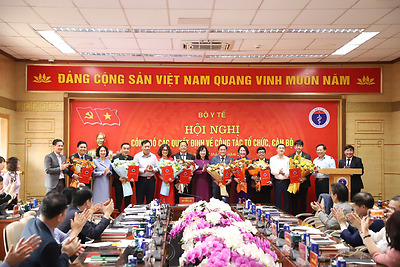With the current complex dengue situation in many provinces and cities across the country, the website editorial board of the General Department of Preventive Medicine (GDPM) had a talk with a representative of the World Health Organization (WHO) in Viet Nam, Dr Masaya Kato.
With the current complex dengue situation in many provinces and cities across the country, the website editorial board of the General Department of Preventive Medicine (GDPM) had a talk with a representative of the World Health Organization (WHO) in Viet Nam, Dr Masaya Kato.

Journalist: 1) Could you please discuss the current dengue situation in the world?
Dr Kato: The number of dengue cases has dramatically increased in recent decades in the world. It is estimated that the incidence of dengue has increased 30-fold over the last 50 years. An estimated 3.9 billion people in over 100 countries are now at risk of infection with dengue viruses. This shows that dengue control is challenging for many countries.
The increase in the number of dengue cases is due to various factors. Unplanned rapid urbanization, climate change that affects rainfall and temperature, the increase in the mobility of people and goods inside and across countries, and the level of immunity among populations all affect the transmission of the dengue virus across the globe. In addition, many countries have not invested sufficiently in dengue control, and the existing measures to control dengue are not implemented to their fullest potential.
Journalist: 2) What are your comments on the dengue situation in Viet Nam this year?
Dr Kato: Dengue is endemic in Viet Nam – this means dengue is constantly found in the country - and we see a substantial number of people affected by dengue every year, especially in the south and central coastal areas. However, this year we have seen a much higher number of dengue cases in the northern part of Viet Nam, especially in Hanoi. Usually the number of dengue cases starts to increase around June or July in Hanoi, but this year it started much earlier.
Through our close collaboration with the health sector in Viet Nam, we have seen the extensive experience the Ministry of Health has in dengue prevention and control. The Ministry of Health’s national guidelines are largely in line with international standards. We have seen the hard work of health workers in the communities and in hospitals to fight dengue. Their efforts range from surveillance and vector control to clinical management. However, we also understand the implementation has faced challenges, such as scarce resources, limited collaboration among stakeholders and weather conditions. As a result, in some places dengue prevention and response has not been as effective as expected.
Journalist: 3) Some countries, including Singapore, have successfully and rapidly controlled mosquito borne disease outbreaks. What can Viet Nam learn from their experience?
Dr Kato: Viet Nam already has a robust response to dengue, but of course we can learn good practices from other countries. I would like to highlight the following three points, based on lessons learnt from various countries.
First, a proactive approach in dengue control is important, rather than reacting to an outbreak. For example, vector control, such as breeding site reduction, should be implemented all year round, not just during the time of outbreaks. Continuous surveillance efforts must generate good quality epidemiological information to target prevention and control activities to the high risk areas where they are most needed. To strengthen this proactive approach, Viet Nam could consider developing a national strategic plan for the prevention and control of dengue and related vector-borne diseases. Earmarked funding for dengue control is also needed.
Second, in various countries we have seen that intersectoral collaboration is a critical factor for effective dengue control. For example, in Singapore the National Environmental Agency takes the main responsibility for the control of Aedes mosquitoes that carry dengue and Zika viruses. To get rid of breeding sites at construction sites or schools, the cooperation with the construction and education sectors is crucial. In Viet Nam, better participation of non-health sectors, guided by an inter-sectoral steering committee, is needed in order to strengthen dengue control efforts.
Third, communities should be engaged more in dengue control in Viet Nam. Based on lessons learnt from other countries, community participation and ownership are keys to the success and sustainability of dengue control. For example, vector control can be enhanced by engaging communities to identify, empty, remove or treat mosquito breeding sites in and around their homes. Effective risk communication raises communities’ awareness and encourages people to maintain their homes clean and mosquito-free and to promptly seek treatment after being infected with dengue. We believe local authorities’ leadership and good cooperation among communities is critical for effective dengue control. Only when people know how to keep themselves safe and take action, can dengue be successfully prevented and managed.
Journalist: 4) How has WHO been supporting Viet Nam in dengue prevention and response?
Dr Kato: We have supported the Ministry of Health in analyzing the situation and in conducting risk assessments of the ongoing dengue situation in Viet Nam. We have also provided information on good practices and experiences from other countries. Furthermore, we have supported building local capacity in risk communication, clinical management of dengue cases, and in piloting new approaches for surveying adult mosquitoes. WHO is also in discussion with the Ministry of Health to support the review of the current dengue response and the potential development of a national strategic plan on dengue prevention and control. We also plan to support the piloting and training for targeted residual spraying as the new approach for vector control.
Journalist: Thank you for your sharing !
General Department of Preventive Medicine, Ministry of Health
Admin









 Tin tức nổi bật
Tin tức nổi bật
